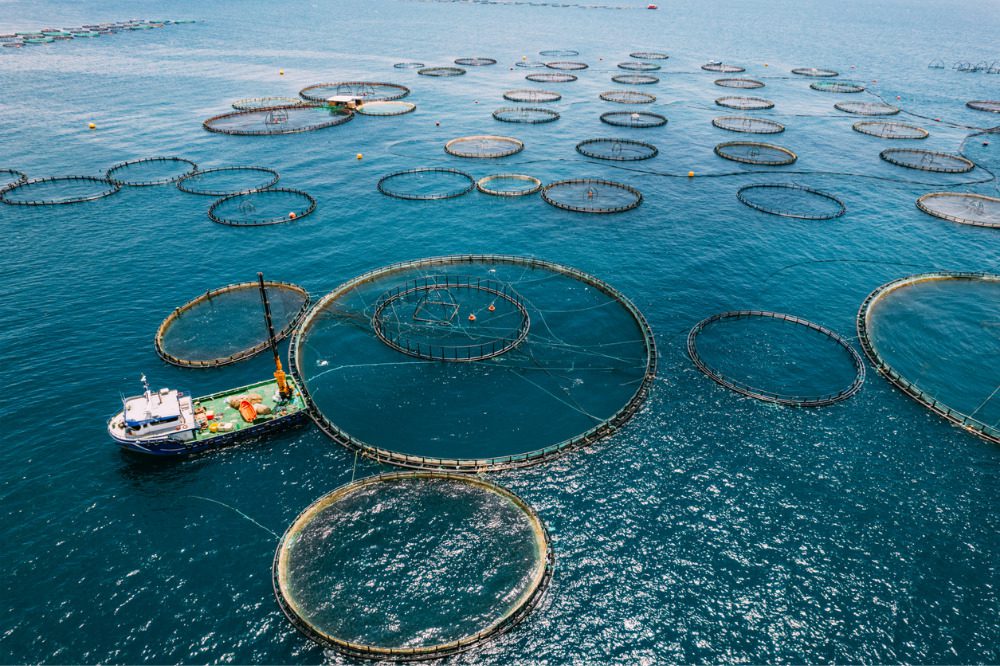Protecting fish farms from severe weather events

This article was provided by AXA XL
During the winter months, fish farmers across Europe are bracing themselves for winter storms, which can have a significant impact on the aquaculture market, damaging farms and resulting in the potential loss of valuable fish stocks. Kristian Flem, claims manager at AXA XL, discusses some of the steps clients can take to try to minimize losses when storms hit.
Winter storms can have a major impact on the fish farming industry. Storms of varying severity are inevitable during the winter months and fish farmers are preparing themselves for potential storm damage and finding ways to manage this risk.
When storms hit coastlines, particularly along the Mediterranean where there are fewer fjords or islands to shelter farms from a storm’s force, leaving them exposed to the ocean, the sea cages in which fish are farmed can be damaged. Strong waves can completely crush a cage and this damage may result in fish stocks being killed or lost. Often fish survive the impact of a storm but are dispersed out to sea, resulting in losses for the farmer.
Storm Gloria, a category 3 storm which hit eastern Spain and southern France in January 2020, caused significant losses for many fish farmers, particularly in Spain, home to the biggest fishing industry in the European Union.
Spain produces about 1.2 million tonnes of fish every year – from both aquaculture and wild fishing – according to figures from the European Union, with the most valuable stock being tuna which accounts for about 33% of the value of fish sold.
Storm Gloria lashed the eastern coastline of Spain causing the largest waves ever recorded in the Mediterranean, estimated at more than 13m in height. Storm defences were breached in major ports and storm surge of up to 3km inland was reported in some places.
It’s estimated that Spanish fish farms lost about 50% of their production during Storm Gloria. Although fish farms in the region had moorings and cages built to withstand rough conditions, the severity of the storm sadly resulted in acute losses for some. Tuna thought to be worth as much as US$1 million washed up on beaches along the Spanish coastline. While some fish escaped after netting was ripped apart by the force of the storm, countless others died as cages were crushed and fish suffered from the effects of torrid water conditions and stress.
In addition to the risk that fish are killed by events like Storm Gloria, the risk of fish escaping is also top of mind for fish farmers. Not only are those fish – and their value – lost to the farm, they can have an adverse impact on wild fish populations. Farmed salmon, for example, if they escape will likely try to migrate upstream in rivers where they mingle with wild salmon populations, potentially chasing them away and destroying them.
Managing the loss
There are steps that fish farmers can try to try to protect themselves against the risk of losses caused by winter storms. Undertaking a risk assessment ahead of time can help to get a sense of where there may be potential frailties. When storms are forecast, farmers can shore up cages with extra moorings, for example, and ensure they have access to vessels and equipment such as cranes to swiftly repair any damage after a storm subsides.
Another action fish farmers can take to minimise the risk before the winter storms hit is to harvest out some tonnage of fish from each cage. During days with strong currents and waves the nets will “bag” and not keep their shape, meaning fish have less space in which to swim. An early harvest will lower the density of fish in cages, reducing the risk of fish being rubbed against the netting and each other, which can result in wounds that may then be infected by bacteria.
Fish farmers also can sell surviving stock at market value to recoup some of the financial losses of fish that perish or escape during storms.
Winter storms have always been a concern for Europe’s fish farmers but the impact of a changing climate has served to highlight the potential frequency and severity of storms and their impact on fish farms.
While severe weather can be volatile and difficult to prepare for, assessing this risk and putting in place measures to reduce the impact of storm damage to fish stocks ahead of time should go some way to reducing the value of fish lost this winter.





